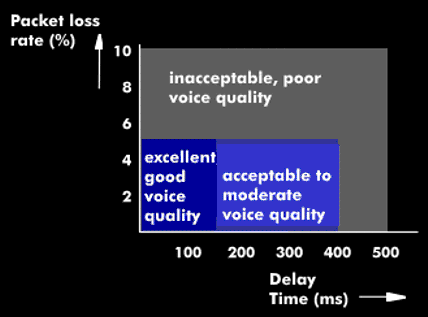packet loss rate (PLR)
The packet loss rate ( PLR) indicates the percentage of lost data packets on a transmission link. The packet loss rate is the ratio of the number of packet losses to the total number of transmitted data packets.
The packet loss rate is a decisive factor for the voice quality of packet-switched voice, as used in Internet telephony( VoIP), Voice over LAN (VoLAN) or VoWLAN. It plays the decisive role in the evaluation of speech quality according to Perceptual Evaluation of Speech Quality( PESQ) or Multimedia Perception Assessment Center( MPAC) and is specified by ITU-T in Recommendation G.114. In addition, the packet loss rate is specified in the ITU-T QoS classes.
Optimal connections achieve a packet loss rate of less than 0.5%, which corresponds to excellent voice quality. At a loss rate of 5%, the voice quality is still acceptable. In the case of high traffic volumes, congestion and routing problems, the packet loss rate on the Internet can rise to up to 20%, which massively impairs the transmission.

